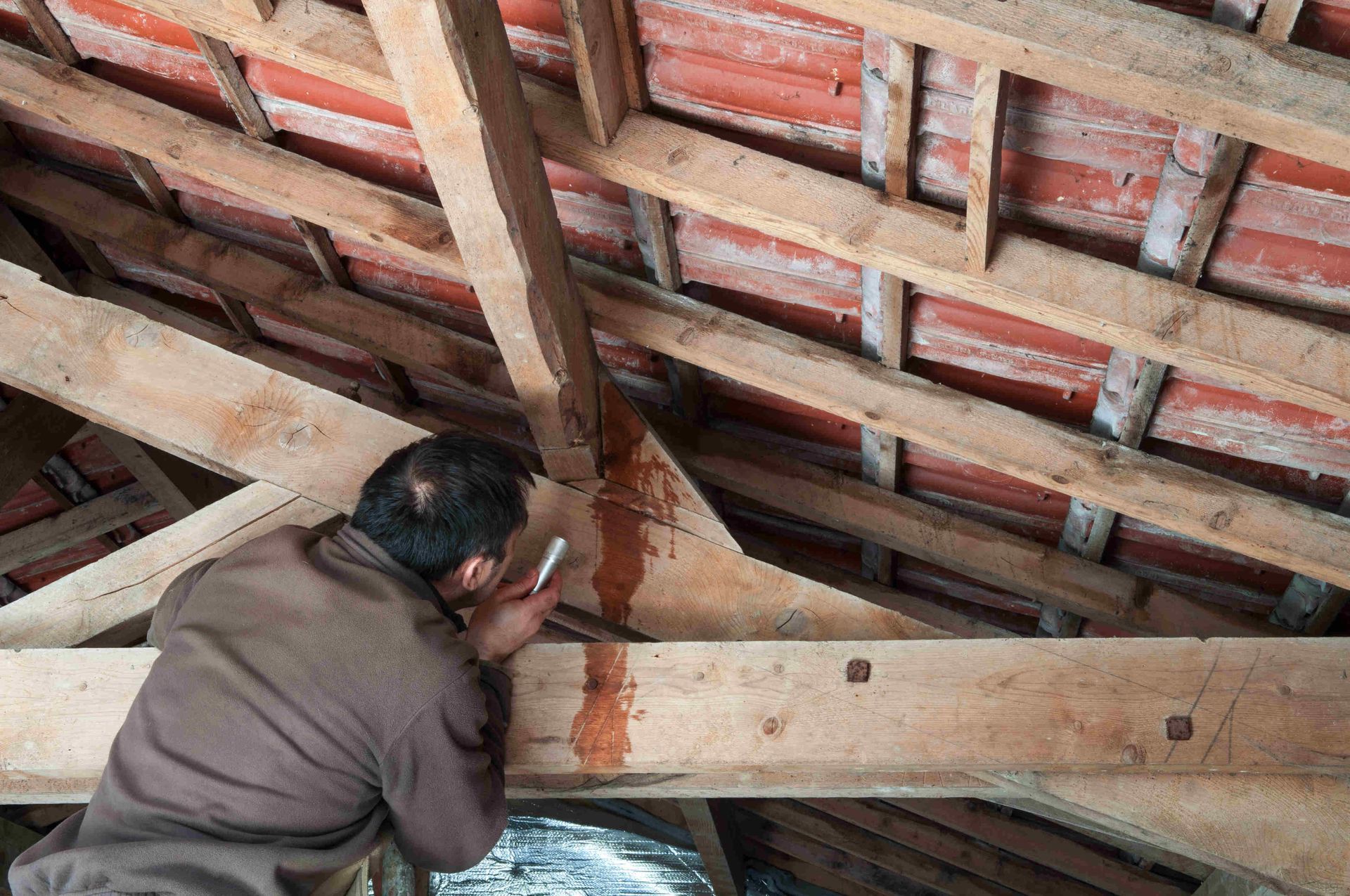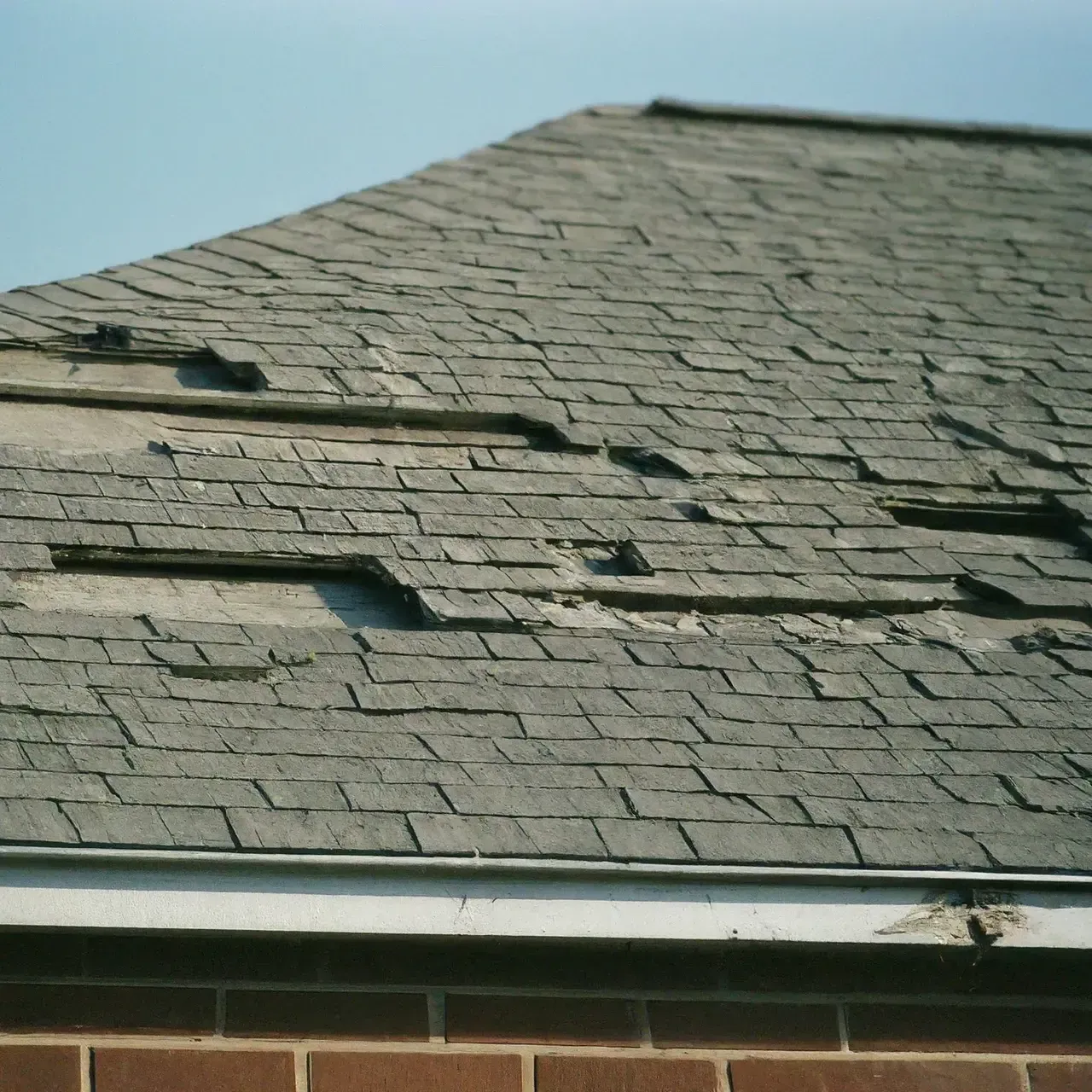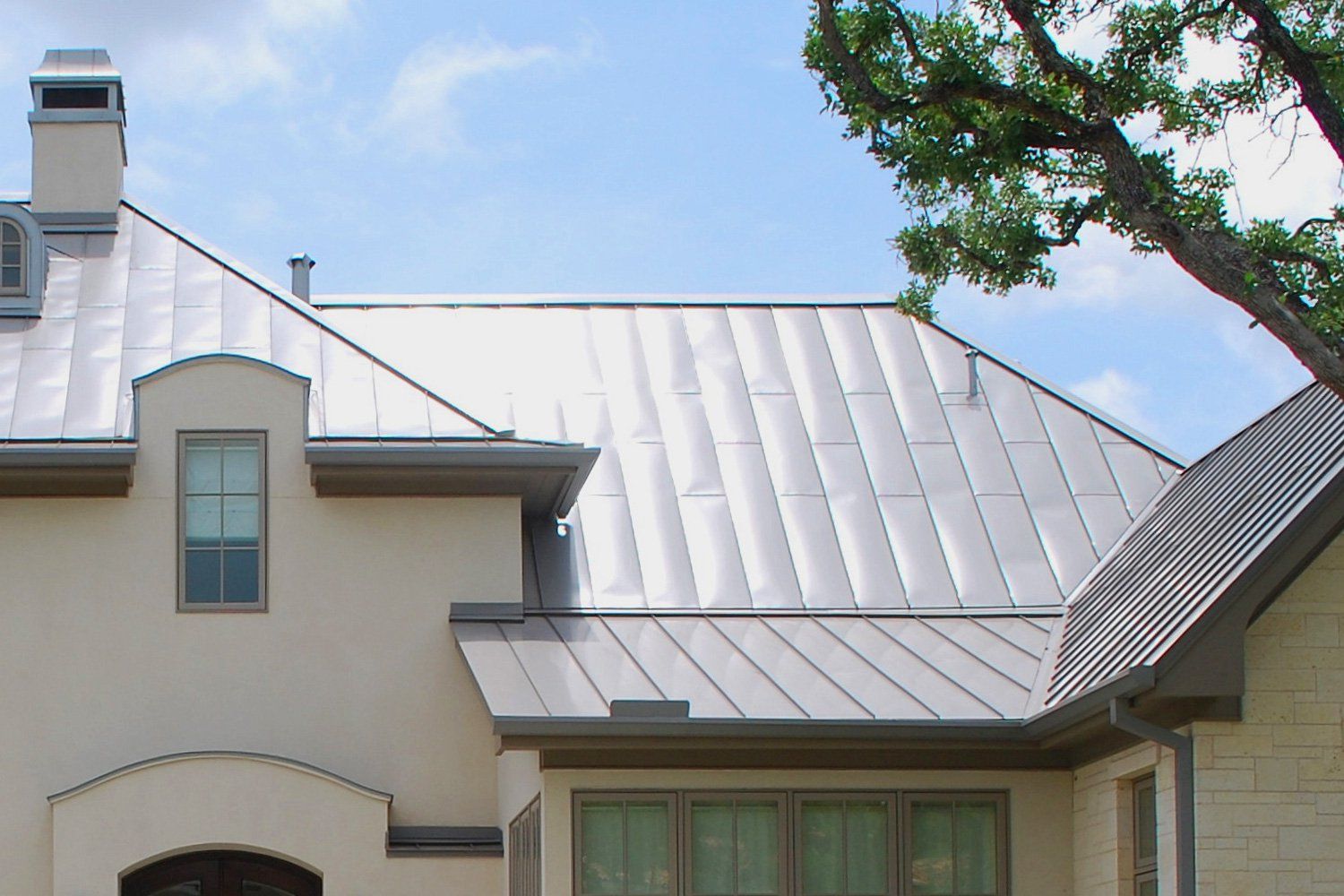Fixing your roof can save money, but it's not always a good idea to do it yourself. Some repairs are easy for homeowners to handle, while others need a pro. It's key to know the difference.
You can safely do small roof repairs like replacing a few shingles or cleaning gutters. These tasks don't need special skills or tools. But big jobs like fixing leaks or replacing large sections of the roof are risky for DIY. They can lead to more damage if not done right.
Your safety matters most when deciding to DIY or call a pro. Working on a roof can be dangerous. If you're not sure about climbing up there or don't have the right gear, it's best to get help. A pro has the skills and tools to do the job safely and correctly.

Assessing Your Roof: Safety and Damage Evaluation
Checking your roof's condition is important for keeping your home safe and dry. You need to spot problems early and know when it's safe to fix things yourself.
Identifying Common Roofing Issues
Look for missing or damaged shingles. These can let water in and cause leaks. Check for curled or cracked shingles too. They might need to be replaced.
Inspect your roof for sagging areas. This could mean there's a bigger problem underneath. Extensive damage or structural issues usually need a pro to fix.
Check your gutters and downspouts. If they're full of shingle granules, your roof might be wearing out. Look inside your attic for signs of water damage or daylight coming through the roof boards.
Safety Considerations Before DIY
Always put safety first when checking your roof. Use a sturdy ladder and have someone spot you. Wear non-slip shoes and be extra careful on wet or steep roofs.
Don't walk on the roof if you can avoid it. You could hurt yourself or damage the shingles. Use binoculars to inspect from the ground or from a ladder at the roof's edge.
Choose a dry, calm day for roof work. Wind or rain make it much more dangerous. If you're not comfortable on a ladder or have a very steep roof, it's best to call a pro.
Basic DIY Roof Repair Techniques
Fixing common roof issues can save you money and prevent future damage. These simple techniques can help you tackle leaks, damaged shingles, and flashing problems on your own.
Fixing Leaks and Small Holes
Roof leaks can cause major damage if left untreated. To fix small leaks:
- Locate the leak source from inside your attic.
- Mark the spot with chalk.
- Clean the area around the leak.
- Apply roofing cement under loose shingles.
- Press down firmly to seal.
For tiny holes:
- Use a caulking gun to apply roofing sealant.
- Smooth it out with a putty knife.
Remember to wear non-slip shoes and use safety gear when working on your roof.
Replacing Damaged Shingles
Damaged shingles can lead to water infiltration. Here's how to replace them:
- Carefully lift the edges of surrounding shingles.
- Remove nails holding the damaged shingle.
- Slide out the old shingle.
- Insert the new shingle.
- Secure with roofing nails.
- Apply roofing cement under the shingle edges.
Always match the new shingle color and style to your existing roof. Work on a dry, calm day for best results.
Re-sealing Flashing and Vents
Flashing and vents often develop leaks over time. To reseal them:
- Clean the area around the flashing or vent.
- Remove old caulk or sealant.
- Apply a generous bead of roofing sealant.
- Smooth it out with a putty knife.
For metal flashing:
- Check for loose nails and hammer them back in place.
- Replace any corroded flashing.
Regular maintenance of these areas can prevent costly water damage to your home's interior.

Tools and Materials You'll Need
Proper tools and materials are key for DIY roof repairs. You'll need both specialized roofing equipment and the right supplies to fix common issues effectively.
Essential Roofing Tools
A good roofing toolkit includes several important items. You'll need a hammer, pry bar, and utility knife for removing old shingles and cutting materials. A roofing nailer or hammer tacker helps secure new shingles quickly.
Safety gear is crucial. Use a sturdy ladder, non-slip shoes, and a safety harness when working on your roof. Wear gloves to protect your hands and safety glasses to shield your eyes from debris.
Other helpful tools include:
- Caulking gun for applying sealant
- Measuring tape
- Chalk line for marking straight lines
- Roofing shovel or tear-off tool
Choosing the Right Materials
The materials you need depend on your specific repair job. For minor fixes, you may only need:
- Roofing cement
- Roof sealant
- Replacement shingles matching your roof
For larger repairs, gather:
- Roofing nails
- Underlayment
- Flashing
Choose high-quality materials that match your existing roof. This ensures a seamless repair and long-lasting results. Check your attic for moisture issues before starting repairs, as this may indicate more serious problems requiring professional help.
When buying shingles, purchase extra to account for waste and future repairs. Store leftover materials in a dry place for future use.

When to Call a Professional Roofer
Some
roof repairs are too complex or dangerous for DIY. Safety and expertise are key when deciding to call a pro.
Complex Repairs and Replacement
Complex roof repairs often require professional help. If you spot widespread damage or multiple leaks, it's time to call an expert.
Large areas of missing shingles or severe hail damage are red flags. These issues can lead to bigger problems if not fixed properly.
Roof replacement is another job best left to pros. They have the tools and know-how to handle big projects safely.
Professionals can spot hidden damage you might miss. They'll ensure your new roof meets local building codes.
Structural Damage and Legal Considerations
Structural roof damage needs immediate professional attention. Signs include sagging areas, cracked interior walls, or doors that stick.
These issues could mean your roof's support system is compromised. Trying to fix this yourself can be dangerous and might worsen the problem.
Legal and insurance factors also matter. DIY repairs might void your warranty or cause insurance issues. Professional roofers are insured and their work is often guaranteed.
Some areas require permits for roof work. Professionals know local regulations and can handle the paperwork for you.

Maintaining Your Roof Post-Repairs
Taking care of your roof after repairs helps extend its lifespan and prevent future issues. Regular upkeep and long-term strategies are key to maintaining your roof's health.
Regular Inspection and Maintenance Tips
Check your roof at least twice a year, ideally in spring and fall. Look for loose or missing shingles, cracks, or other damage.
Clean your gutters and downspouts regularly to prevent water buildup. Removing debris like leaves and branches can stop clogs and potential harm.
Trim overhanging tree branches to reduce the risk of damage during storms. Keep an eye out for moss or algae growth, which can lead to moisture problems.
After severe weather, do a quick visual inspection from the ground. Use binoculars if needed to spot any obvious issues.
Long-Term Roof Care Strategies
Invest in proper attic insulation and ventilation. This helps regulate temperature and moisture levels, preventing ice dams and extending shingle life.
Consider applying a protective coating to your roof every few years. This can boost its resistance to UV rays and weather damage.
Keep records of all repairs and inspections. This helps track your roof's history and can be useful for future maintenance or when selling your home.
Schedule professional inspections every 3-5 years. Experts can spot issues you might miss and provide valuable advice on long-term care.
Address small problems quickly before they become major issues. Prompt repairs can save you money in the long run.
Conclusion
DIY roof repairs can save you money and time for small issues. You can handle tasks like replacing a few shingles or patching minor leaks.
But some jobs need a pro. Complex repairs, extensive damage, or safety concerns call for expert help.
Providence Roofing Company offers top-notch roofing services in Providence, RI. Our team has the skills and tools to tackle any roof problem.
You can trust us for:
- Thorough inspections
- Quality repairs
- Full roof replacements
- Expert advice
Don't risk your safety or home's integrity. When in doubt, reach out to Providence Roofing Company. We'll ensure your roof stays strong and leak-free for years to come.
Remember, a well-maintained roof protects your biggest investment - your home. Choose wisely between DIY and professional help to keep your roof in top shape.


